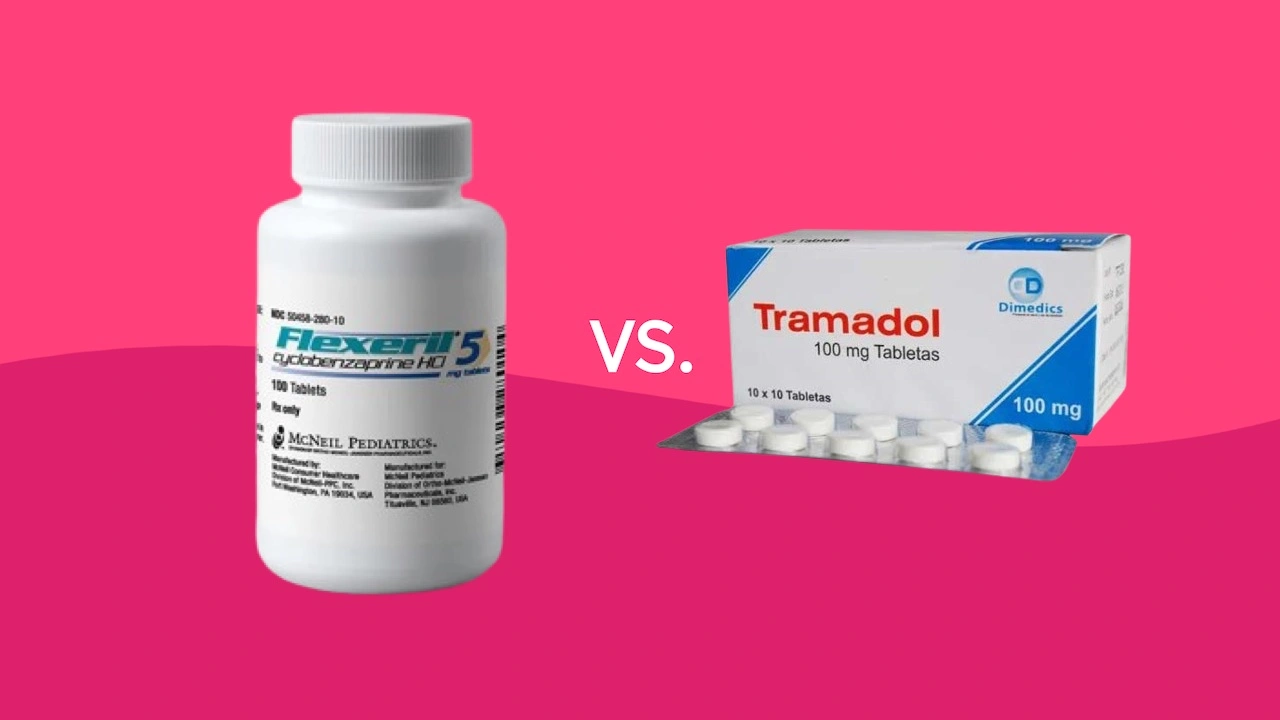Flexeril (cyclobenzaprine) and tramadol are two such drugs that are sometimes used together, but their concurrent use requires careful consideration and monitoring due to potential interactions and risks.
What is Flexeril (Cyclobenzaprine):
Flexeril is a muscle relaxant commonly prescribed to treat muscle spasms, pain, and discomfort associated with musculoskeletal conditions. It works by blocking nerve impulses that cause muscle spasms, allowing the muscles to relax. While Flexeril is generally well-tolerated, it can cause side effects such as drowsiness, dizziness, and dry mouth.
What is Tramadol ?
Tramadol is a synthetic opioid analgesic used to manage moderate to severe pain. Unlike traditional opioids, tramadol has a unique mechanism of action that involves binding to specific receptors in the brain and inhibiting the reuptake of neurotransmitters like serotonin and norepinephrine. This dual action contributes to its pain-relieving properties while potentially reducing the risk of some opioid-related side effects.
Potential Interactions and Risks:
When Flexeril and tramadol are taken together, there is a risk of adverse interactions and increased side effects. One of the major concerns is the development of serotonin syndrome, a potentially life-threatening condition caused by excessive serotonin levels in the brain. Tramadol can increase serotonin levels, and when combined with Flexeril, which also affects serotonin levels, the risk of serotonin syndrome increases.
Symptoms of serotonin syndrome may include agitation, confusion, rapid heart rate, high blood pressure, sweating, and tremors. If these symptoms occur, immediate medical attention is necessary.
Additionally, both Flexeril and tramadol can cause sedation and drowsiness, and their combined use may amplify these effects, increasing the risk of accidents or falls.
Talking to Your Healthcare Provider:
Before combining Flexeril and tramadol, it is essential to have an open and honest discussion with your healthcare provider. They will assess your individual risk factors, medical history, and the potential benefits and risks of the combination. Factors such as age, liver and kidney function, and other medications you are taking will be considered.
Your healthcare provider may recommend adjusting the dosages or schedules of these drugs to minimize the risks of side effects and interactions. It is crucial to follow their instructions carefully and report any adverse reactions promptly.
Monitoring and Precautions:
If your healthcare provider determines that the combination of Flexeril and tramadol is appropriate for your condition, they will likely recommend regular monitoring for signs of adverse effects or interactions. This may include periodic blood tests, blood pressure checks, and assessments for signs of serotonin syndrome or excessive sedation.
It is also essential to avoid consuming alcohol or other central nervous system depressants while taking this combination, as they can amplify the sedative effects and increase the risk of respiratory depression.
Tramadol and Flexeril Comparison
| Characteristic | Flexeril (Cyclobenzaprine) | Tramadol |
| Primary Use | Muscle relaxant for spasms and pain | Opioid analgesic for moderate to severe pain |
| Mechanism of Action | Blocks nerve impulses causing muscle spasms | Binds to opioid receptors and inhibits neurotransmitter reuptake |
| Potential Side Effects | Drowsiness, dizziness, dry mouth | Nausea, constipation, dizziness, serotonin syndrome |
| Major Interaction Risk | Increased risk of serotonin syndrome when combined with tramadol | Increased risk of serotonin syndrome when combined with Flexeril |
| Order Online? | Out of Stock | Buy Tramadol Online |
Conclusion:
The combination of Flexeril (cyclobenzaprine) and tramadol can be effective for managing muscle spasms and pain, but it carries significant risks of adverse drugs interact and side effects. Open communication with your healthcare provider, adherence to dosage instructions, and vigilant monitoring are essential when taking these two drugs together. Understanding the potential risks and taking the necessary precautions can help ensure safe and effective treatment while minimizing the chances of complications.

